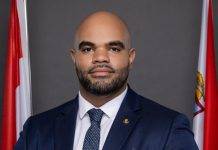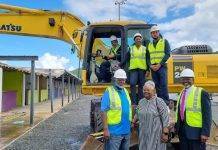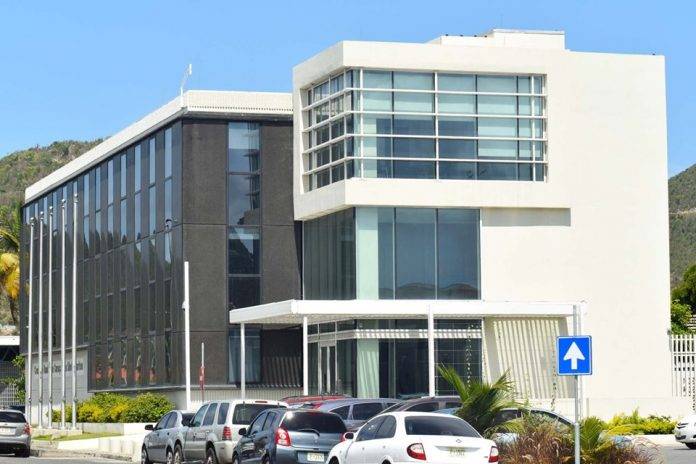Outlook surrounded by high uncertainty
WILLEMSTAD/PHILIPSBURG: The monetary union of Curaçao and Sint Maarten experienced moderate growth in 2021 following an unprecedented contraction in 2020 caused by the COVID-19 pandemic, according to estimates of the Centrale Bank van Curaçao en Sint Maarten (CBCS). Real GDP grew by 4.0% in Sint Maarten, while Curaçao recorded a milder expansion of 1.7% as the country went into a 6-week lockdown in March – April 2021 due to a surge in COVID-19 cases.
Looking forward, economic growth is projected to accelerate across the monetary union in 2022 with real GDP increasing by 6.6% in Curaçao and 14.6% in Sint Maarten. “This recovery is, however, surrounded by high uncertainty, of which the main downside risk is the emergence of new COVID-19 variants combined with travel restrictions that could dampen the further recovery of tourism activities in Curaçao and Sint Maarten”, warns CBCS-president Richard Doornbosch in the central bank’s second Quarterly Bulletin of 2021.
Curaçao
Curaçao’s estimated real GDP expansion in 2021 was driven by net foreign demand, while domestic demand shrank. Net foreign demand contributed positively to real GDP due to a gain in the export of goods & services. In particular, foreign exchange earnings from tourism and ship-repair rose. Yet, a higher import bill driven by increased tourism spending and more investments moderated the increase in net foreign demand. Both private and public spending caused the decline in domestic demand.
Private spending went down because of a decline in private consumption as the higher inflation affected purchasing power. In addition, the worsened situation in the labor market and the 6-week lockdown had a negative effect on private consumption, while the fiscal support that the government provided to the groups in society most affected by the COVID-19 pandemic moderated the decline in consumer spending.
“By contrast, private investments soared as several projects in, among other things, the tourism and real estate sectors, that were postponed in 2020, resumed over the course of 2021”, explained Doornbosch.
Sint Maarten
In Sint Maarten, private and net foreign demand supported real GDP growth in 2021. Private demand rose as a result of higher investments in, among other things, real estate projects, the construction of the hospital, and the start of the reconstruction of the airport. Meanwhile, net foreign demand grew as the increase in the export of goods & services surpassed the rise in imports.
“The positive export performance largely reflected the strong rebound in tourism activities since the second quarter of 2021. Meanwhile, the rise in imports was caused by increased domestic and tourism spending”, added Doornbosch. By contrast, public demand dropped due to lower consumption, particularly reduced government spending on wages & salaries. “Alas, public investments did not contribute to real GDP growth as delays in the budget approval process hampered the execution of planned investment projects”, continued Doornbosch.
Outlook
“In 2022, both countries will benefit from a robust recovery of tourism activities, albeit still below pre-pandemic levels, and increased private investments”, Doornbosch explained. In Curaçao, construction projects in the tourism, real estate, and utilities sectors are the main contributors to the increase in investments. In Sint Maarten, the reconstruction of the airport in particular will support the rise in private investments. Inflation is expected to ease in both Curaçao and Sint Maarten to 2.8% and 3.4% respectively, as the surge in international oil and non-oil commodity prices in 2021 is expected to be transitory,” he added.
Doornbosch explained that besides the emergence of new COVID-19 variants combined with travel restrictions, the implementation of a reform package that the countries agreed with Netherlands poses a risk to the 2022 outlook. “The reform package includes structural measures in the areas of public finance, economy, labor market, education, financial sector, and health care, which could stimulate growth. However, if counter-cyclical measures are taken to consolidate the public finances, the pace of economic recovery could be dampened,” he continued. In addition, if the hike in international commodity prices of 2021 turns out to be less transitory than initially projected, inflation in Curaçao and Sint Maarten would turn out higher, affecting the increase in domestic demand.
Doornbosch also mentioned that for Curaçao specifically, the future of the refinery is an upside risk to the outlook. If activities at the refinery would restart in 2022 after a new strategic partner is found, it would result in higher real GDP growth. Meanwhile, for Sint Maarten, delays in the implementation of reconstruction projects, particularly the airport, prolonged social unrest in French Saint Martin, and a strong hurricane season could affect its real GDP expansion in 2022”, he added.
The complete text of the Report of the President and the second Quarterly Bulletin of 2021 can be viewed on the CBCS website at www.centralbank.cw under the Publications section.






























